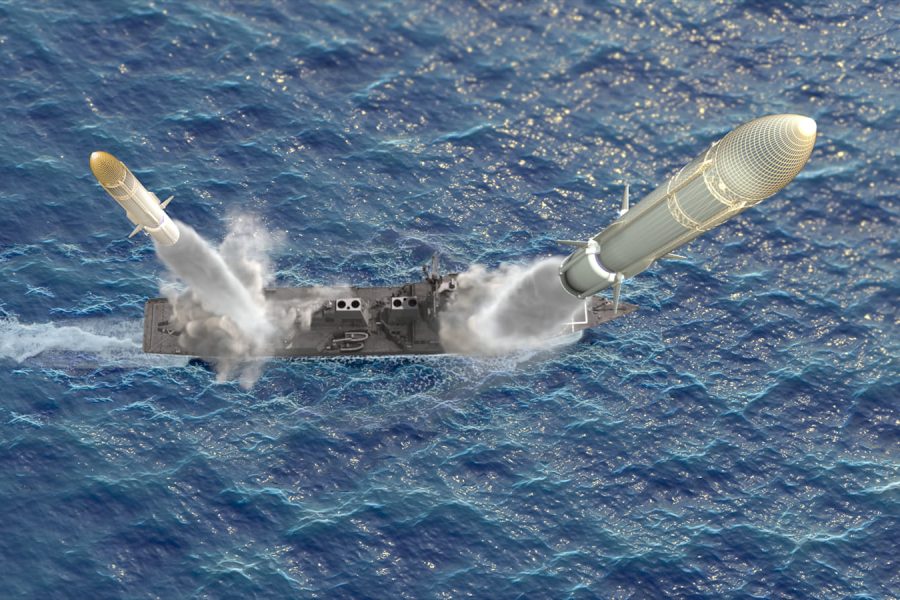Advances by both Russia and China with hypersonic weapons have the U.S. Air Force general in charge of homeland defense seriously concerned about how to detect and defend against the threat—and the new 2025 budget request is pushing hundreds of millions of dollars toward the effort.
Last week in two different congressional hearings, Gen. Gregory M. Guillot, head of the North American Aerospace Defense Command and U.S. Northern Command, emphasized that hypersonics are “probably the most technologically challenging threat that we’re facing, as well as the most destabilizing.” Compared to intercontinental ballistic missiles (ICBMs), hypersonic missiles can fly at lower altitudes with less predictable flight patterns, resulting in shorter detection times.
Russia has made significant investments in advanced hypersonic technologies such as glide vehicles, and a 2023 Department of Defense report described China as having the world’s leading hypersonic weaponry, a concern recently emphasized by lawmakers.
Yet in its fiscal 2025 budget request, the Missile Defense Agency is actually planning to cut funds for regional hypersonic missile defense slightly, from $209 million in FY24 to $182 million.
The dip, however, is due in part to savings the agency is reaping from collaboration with Japan’s Ministry of Defense on a next-generation hypersonic missile defense system, budget documents state.
Streamlined contracting practices and the utilization of existing systems also lowered costs—savings MDA budget documents state are crucial for transitioning program requirements and system design towards developing and testing hardware and software.
Last year, the U.S. and Japan announced a joint effort to develop the Glide Phase Interceptor (GPI), involving RTX (formally known as Raytheon Technologies) and Northrop Grumman. This missile defense system launches modified missiles from U.S. Navy surface warships, aimed at intercepting hypersonic weapons during their “most vulnerable” glide phase, occurring post-launch and before re-entry into the atmosphere. The project represents the second joint development of an interceptor missile by Washington and Tokyo, following the two allies’ successful collaboration on the advanced interceptor missile project, Standard Missile-3 (SM-3) Block IIA.
MDA’s budget request stated the GPI is scheduled for delivery in fiscal 2035. However, Congress mandated in its 2024 National Defense Authorization Act that the Glide Phase Interceptor program achieve initial operational capability by the end of 2029 and full operational capability by the end of 2032.
Lawmakers have shown a willingness to add money to meet its hypersonic defense requirements, though. In the 2024 NDAA, they doubled authorized spending for hypersonic defense, adding $225 million to the Pentagon’s $208 million request aimed to accelerate development and fielding of the GPI.
For to GPI to shoot hypersonic missile downs, the U.S. will first have to detect and track them. Accordingly, Guillot cited the Long Range Discrimination Radar (LRDR)—with a 220 degree wide field of view and arrays measuring 60 feet high by 60 feet wide—as one of his “top priorities.”
MDA is seeking $100.9 million for LRDR in fiscal 2025, relatively consistent with the previous year’s request of $103 million. The system will provide “persistent long-range midcourse discrimination, precision tracking, and hit assessment,” according to budget documents, with particular focus on potential long-range missile threats from the Pacific theater.
“LRDR’s improved discrimination capability in the Missile Defense System architecture increases the defensive capacity of the homeland defense interceptor inventory by enabling conservation of Ground Based Interceptors,” budget documents state.
An LRDR system has already been initially fielded at Clear Space Force Station, Alaska. But 2024 and 2025 are poised to be pivotal years for the capability, as MDA outlined plans in its budget to test and incorporate it into the agency’s “increments” and achieve operational acceptance and transfer of the system to the U.S. Space Force.
Aside from GPI and LRDR, the Missile Defense Agency’s 2025 hypersonic defense budget includes $76 million for its Hypersonic and Ballistic Tracking Space Sensor prototyping program. In February, MDA and the Space Development Agency worked together to launch a batch of missile tracking satellites into low-Earth orbit, including MDA’s HBTSS and SDA’s Tracking Layer spacecraft. For the next several years, MDA wants to conduct on-orbit tests and operations with the satellites.
